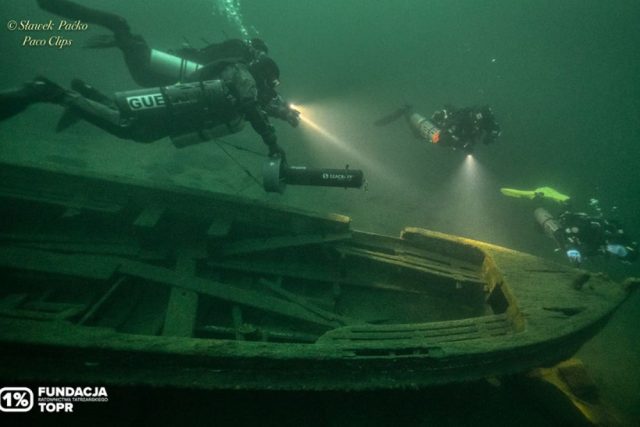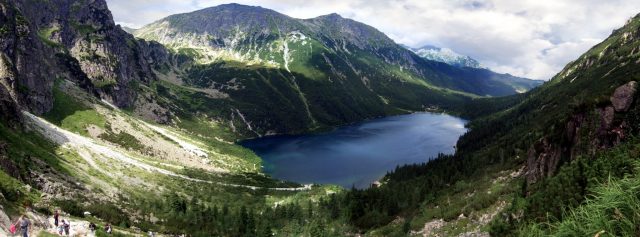Deep in the Tatras Mountain range in Poland is the Morskie Oko, the ‘Eye of the Sea’, a lake surrounded by soaring mountain peaks and feted for its clear air and dramatic scenery.
As far back as the 1850s it had already become a popular resort destination. A tourist guide from 1858, written by Maria Steczkowska tells of pleasure craft and fancy rafts amongst other attractions.
Dr. Tytus Chałubiński, a local doctor from Zakopane was also credited with popularizing the beneficial attributes of the lake and so, by 1908, the sheer number of visitors meant that two sea-going lifeboats were launched on the lake to provide pleasure cruises for visitors.
The local Tatra Society was talked into the purchase by Valery Eljasz, the two vessels supplied by a Bremen boat-maker, who also supplied similar craft to the Baltic Prussian sea rescue service reports thenewsfirst.com
It is thought they were put to use not only to ferry passengers around the spectacular vistas of the Morskie Oko, but also for use as rescue boats should visitors get into difficulty in the bracing, health-giving, icy waters.

The boats proved popular but difficult to maintain and just four years later an appeal was set up by Mariusz Zaruski to restore both vessels. Zaruski was a founder member of the Tatra Volunteer Search & Rescue Group (TOPR), the group that has just recently released photographs of the newly rediscovered wreck of the Syrena.
The discovery was made during a routine training exercise by the search and rescue team five years ago, but the pictures, taken by photographer Sławomir Paćko, were not released until recently, causing a storm of interest on the internet in Poland and across the world, and giving rise to the epithet, the ‘Polish Titanic’.
As time passed and war raged through the country in the middle of the twentieth century the boats, christened Świstak and Syrena, disappeared from regular use, but survived the chaos of WWII.
What happened to the boats in the intervening years was a mystery as few records were kept and in the 1980s the lake’s jetty was dismantled, removing an historic remnant of the mountain lake’s nautical history.
The Morskie Oko has been dubbed one of Poland’s natural wonders and still draws tens of thousands of tourists every year to marvel at the spectacular setting of the lake.
Such a place has attracted many myths and legends, one that there is an underground channel connecting it to the Adriatic Sea, another that a fortune in coins is embedded in the mud on the lakebed where generations of visitors have tossed them in for luck.
Today the lake remains inaccessible by motor vehicle and is a two-hour hike from the nearest tarmac road. The only other means of access is by horse and cart.

In the Winter, the route is more dangerous and passes through an avalanche danger zone. Swimming is banned unless part of a specialist group.
The Baltic Prussian sea rescue service was founded in Kiel in on May 29th, 1865, supplied by boat-builders from Bremen it operated almost identical craft for inshore rescue work. In the years since it has gone on to set up fifty-four lifeboat stations with 185 employed crew and more than 800 volunteers. In 2005 it was estimated that the service had saved some 72,000 lives.
In 1935 it was taken over by the Luftwaffe Seenotdienst, the Nazi Air, Sea Rescue Service and employed new innovative coordinated rescue plans including rescue buoys moored far from the shore. The model was adopted by other coastal nations including the UK and USA, who saw the effectiveness of air-sea operations in saving lives.
Another Article From Us: ‘Ghost boat’ Carrying $80m of Cocaine Washes up on Remote Marshall Islands
By 1939 the prospect of war saw the Germans carry out extensive drills, building airfields in coastal areas to support a growing fleet of seaplanes, which were often used for reconnaissance as well as for rescue missions.
